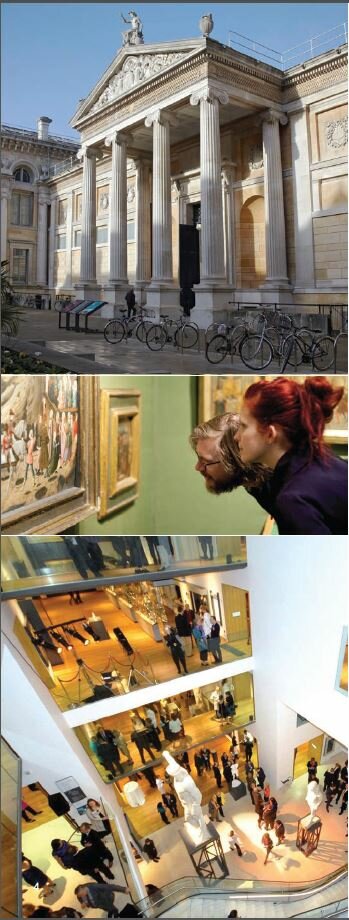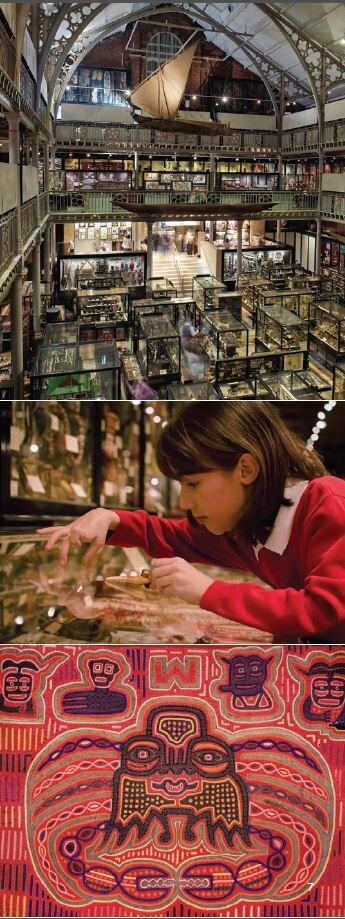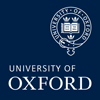Oxford University Museums possess exceptional collections representing the history of the natural world and most cultures from around the globe. The collections are made up of over 8.5 million objects, all forming Designated Collections, and complemented by important archival materials. Collectively the museums receive over 2 million visitors a year, making them some of the most popular museums outside of London, and the most visited University Museums in the UK.
Ashmolean
Founded in 1683, the Ashmolean Museum of Art and Archaeology is Britain's first public museum and one of the oldest in the world. The museum's theme of 'crossing cultures, crossing time' leads visitors from East to West and from the earliest days of human settlement right up to the twenty-first century.
Highlights include the best the best collection of Pre-Dynastic Egyptian material in Europe, the only great collection of Minoan antiquities outside Greece, the most important group pf Raphael Drawings n the world, and outstanding displays of Indian, Chinese, Japanese and Islamic Art,
The museum reopened in 2009 following a £61m redevelopment which doubled the museum's display space, creating 39 new galleries across 5 floors, and an extensive new temporary exhibition space for world-class exhibitions such as Cezanne and the Modern and Discovering Tutankhamun.
Director: Dr Alexander Sturgis | www.ashmolean.org
 Museum of the History of Science
Museum of the History of Science
The Museum of the History of Science houses an unrivaled collection of early scientific instruments in the world's oldest surviving purpose-built museum building. The museum's collections of astrolabes and sundials are the largest in the world and include instruments once owned by Queen Elizabeth I, Cardinal Wolsey, and Nostradamus. The Islamic world is particularly strongly represented, from the 9th to the 19th century. Other highlights include the Marconi collections, the Einstein blackboard, some of the earliest experimental photographs and collections telling the story of the development of antibiotic medicines.
As well as its permanent displays, an ambitious series of temporary exhibitions has established an international reputation for scholarship and the experimental and idiosyncratic: the world's first exhibition of Steampunk attracted global lenders and visitors. For those unable to visit Oxford, online versions of these exhibitions are available. The museums has a core commitment to digital access: its collections database has been fully available online since 1997.
Director: Dr Silke Ackermann | www.mhs.ox.ac.uk
Museum of Natural History
The Museum of Natural History houses over 7 million internationally important mineralogical, paleontological, zoological and archival collections including the earliest surviving British natural history specimens, the only surviving dodo soft tissues, and the first scientifically described remains of dinosaurs. Housed in a Grade I listed Victorian neo-gothic Building, the museum reopened in February 2014 after a 14 month, £2m room restoration project which involved more than 8,500 glass tiles being individually removed, cleaned and resealed. The result is a revitalised, bright and airy museum space.
The museum building was designed with the Pre-Raphaelite precept of 'truth to nature', and since it opening in 1860 has been an intersection for interdisciplinary learning. Famously, the first public event in the museum hosted upon opening was the Great Debate on evolution between Bishop Wilberforce and T.H. Huxley following the publication of Charles Darwin's On the Origin of Species.
Director: Professor Paul Smith | www.oum.ox.ac.uk
Pitt Rivers Museum
The Pitt Rivers Museum cares for one of the world's greatest collections of anthropology and world archaeology. Coming from all corners of the globe, and all periods of human history, the collection includes great cultural treasures, but also tens of thousands of everyday objects which illustrate the diversity of cultural solutions to the same basic problems that we all face as human beings. This aspect is highlighted by the Museum's unique displays, which group artefacts primarily by type or function, rather than the particular culture or region from which the artefacts come. The artefact collection is complemented by an equally large and important collection of fieldwork and other photographs, along with audio recordings and manuscripts.
The museum is currently delivering VERVE, a £1.6m project, funded by the Heritage Lottery and a number of other generous supporters. The five year project will conserve some 2,000 artefacts and redisplay them in re-lighted case runs across all three of the Museum's floors, while still preserving the Museum's distinctive period atmosphere. Running alongside is a wide-ranging programme of free public activities illuminating the ways in which human creativity has driven development in design and technologies.
Director: Professor Mike O'Hanlon | www.prm.ox.ac.uk

